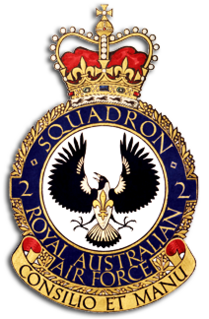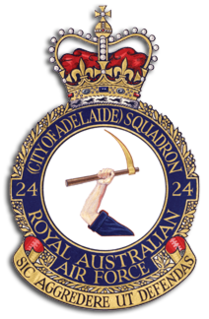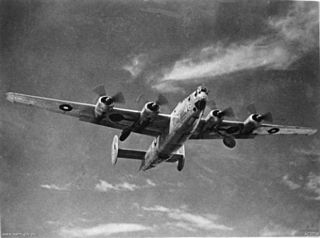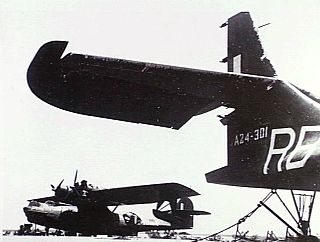
No. 30 Squadron is a squadron of the Royal Australian Air Force (RAAF). Raised in 1942 as a long-range fighter unit, the squadron saw action in the Second World War, serving in the South West Pacific Area against the Japanese and operating mainly in the ground attack and anti-shipping roles from bases in New Guinea and the Netherlands East Indies. After the war, the squadron was disbanded, however, it was re-raised a short time later as a unit of the part-time Citizen Air Force, operating in the target towing and air defence role in New South Wales. In 1960s the squadron ceased flying aircraft and operated surface-to-air missiles, providing for the defence of Sydney and Darwin before disbanding in 1968. The squadron was re-raised again in 2010 and since then it has served as an airbase support squadron located at RAAF Base East Sale.

No. 2 Squadron is a Royal Australian Air Force (RAAF) squadron that operates from RAAF Base Williamtown, near Newcastle, New South Wales. From its formation in 1916 as part of the Australian Flying Corps, it has flown a variety of aircraft types including fighters, bombers, and Airborne Early Warning & Control (AEW&C). During World War I, the squadron operated on the Western Front conducting fighter sweeps and ground-attack missions. It was disbanded in mid-1919, following the end of hostilities. The squadron was briefly re-raised in 1922 as part of the newly independent RAAF, but was disbanded after only a couple of months and not reformed until 1937. It saw action as a bomber unit in the South West Pacific theatre of World War II and, equipped with English Electric Canberra jets, in the Malayan Emergency and the Vietnam War. The squadron was again disbanded in 1982, following the retirement of the Canberra. It was re-formed in 2000 to operate the Boeing 737 AEW&C "Wedgetail". One of the six Boeing 737s was deployed to the Middle East in September 2014, as part of Australia's contribution to the military coalition against ISIS.

No. 13 Squadron is a Royal Australian Air Force (RAAF) squadron. The unit saw combat during World War II as a bomber and maritime patrol squadron and is currently active as a mixed regular and reserve RAAF unit located in Darwin, fulfilling both operational support and training duties.

No. 14 Squadron was a Royal Australian Air Force maritime patrol squadron of World War II. It was formed in 1939 and was based in Western Australia throughout the war. While it conducted many patrols over the waters off Western Australia, it did not see combat. The squadron was disbanded in December 1945.

No. 12 Squadron was a Royal Australian Air Force (RAAF) general purpose, bomber and transport squadron. The squadron was formed in 1939 and saw combat in the South West Pacific theatre of World War II. From 1941 to 1943, it mainly conducted maritime patrols off northern Australia. The squadron was based at Merauke in western New Guinea from November 1943 to July 1944, when it was withdrawn from operations. After being re-equipped, it operated as a heavy bomber unit from February 1945 until the end of the war. The squadron continued in this role until it was redesignated No. 1 Squadron RAAF in February 1948. The squadron was reformed in 1973 to operate transport helicopters but was again disbanded in 1989.

No. 24 Squadron is a Royal Australian Air Force squadron. The squadron was formed in 1940 and saw action as a bomber squadron during World War II serving in the Pacific theatre against the Japanese, and undertaking operations during the Battle of Rabaul, and the New Guinea, New Britain and Borneo campaigns. The squadron was disbanded in 1946 following the conclusion of hostilities, but was re-formed in 1951. From then until 2010 the squadron was an RAAF Reserve squadron located near Adelaide, South Australia; for part of this time, until 1960, the squadron continued to perform flying duties, before converting to a ground support role. In 2010, the squadron combined with Combat Support Unit Edinburgh to become a Permanent Air Force unit and it currently forms part of No. 96 Wing, Combat Support Group.
No. 92 Squadron was a Royal Australian Air Force (RAAF) ground attack squadron of World War II. It was raised in May 1945 to operate Bristol Beaufighter aircraft, but had not completed its training by the end of the war in August and was disbanded the following month.

No. 99 Squadron was a Royal Australian Air Force (RAAF) heavy bomber squadron that was raised during World War II. Formed late in the war, the squadron ultimately did not see action as it became combat ready just as the war came to an end. After the war, it undertook general transportation duties before being disbanded in mid-1946.

No. 93 Squadron was a Royal Australian Air Force fighter squadron that operated during World War II. It was formed in January 1945 and disbanded in August 1946. Due to delays in bringing operational airfields into service, the squadron saw little combat before the end of the war.

No. 82 Wing is the strike and reconnaissance wing of the Royal Australian Air Force (RAAF). It is headquartered at RAAF Base Amberley, Queensland. Coming under the control of Air Combat Group, the wing operates F/A-18F Super Hornet multirole fighters and Pilatus PC-9 forward air control aircraft. Its units include Nos. 1 and 6 Squadrons, operating the Super Hornet, and No. 4 Squadron, operating the PC-9.

No. 21 Squadron is a Royal Australian Air Force (RAAF) general reserve squadron. Formed in the mid-1930s as a unit of the part-time Citizen Air Force (CAF), it was mobilised for service during World War II, when it saw action against the Japanese as a fighter unit in the Malayan campaign, a dive bomber unit in the New Guinea campaign, and a heavy bomber unit in the Borneo campaign. After the war, the squadron continued to fly until 1960, when the CAF ceased flying operations. At that time, No. 21 Squadron converted to a non-flying support role, which it currently fulfils at RAAF Williams.

No. 22 Squadron is a Royal Australian Air Force (RAAF) mixed Permanent and Reserve squadron that provides support for the RAAF in the Sydney region. Formed in 1936, the squadron served in Papua New Guinea during the Second World War, and later followed the Pacific War as far as the Philippines. Following the war, the squadron was re-formed in 1948 but was converted to a non-flying support role in mid-1960. It is currently based at RAAF Base Richmond, New South Wales.
No. 23 Squadron of the Royal Australian Air Force (RAAF) is a non-flying base operations and training squadron headquartered at RAAF Base Amberley near Brisbane, Queensland. The squadron was formed in 1937 and saw action against the Japanese during World War II as a bomber squadron. Operating from Archerfield during the early stages of the war, the squadron undertook maritime patrols off Australia's east coast before converting to a dive-bomber role and taking part in the New Guinea campaign. Later in the war, the squadron converted to Liberator heavy bombers and flew missions against Japanese targets in the Netherlands East Indies. After the war, No. 23 Squadron was used to reform No. 6 Squadron and was then re-raised as a Citizens Air Force unit based in Brisbane. Until 1960, the squadron flew jet fighter aircraft before converting to a ground support role and now forms part of the RAAF's Combat Support Group.

No. 25 Squadron is a general reserve squadron of the Royal Australian Air Force (RAAF). It is based at RAAF Base Pearce in Perth, Western Australia, and forms part of the Combat Reserve Wing. The squadron was formed in early 1937 and until early 1939 was designated as "No. 23 Squadron". During World War II, it provided local air defence for the Perth region, before undertaking Army co-operation duties in 1943–1944 and then converting to the heavy bomber role in 1945. In the heavy bomber role, the squadron took part in operations against Japanese targets in the Netherlands East Indies and supported Allied ground operations during the Borneo Campaign.

No. 78 Squadron was a Royal Australian Air Force (RAAF) fighter squadron of World War II. It was formed in July 1943 as part of expansion of the RAAF's fighter force, and was assigned to mobile striking forces for the duration of the war.

No. 8 Squadron was an Australian flying training squadron of World War I and medium bomber squadron of World War II. The squadron was formed in England in October 1917 as part of the Australian Flying Corps, and disbanded in April 1919. It was re-formed by the Royal Australian Air Force in September 1939. After seeing action during the Pacific War flying Lockheed Hudson and, later, DAF Beaufort bombers, the squadron was disbanded a second time in January 1946.

No. 80 Squadron was a Royal Australian Air Force (RAAF) fighter squadron that operated during World War II. The squadron was formed in September 1943 and was disbanded in July 1946 after seeing action in the South West Pacific Theatre of the war.

No. 76 Wing was a Royal Australian Air Force (RAAF) wing that operated during World War II. Initially based in Far North Queensland, its headquarters transferred to Darwin, Northern Territory, in September 1944 to take control of three PBY Catalina units: Nos. 20, 42, and 43 Squadrons. The prime task of these squadrons was minelaying in the South West Pacific theatre, and they conducted these operations as far afield as Java, Borneo, the Philippines, and China. As well as minelaying, No. 76 Wing's Catalinas flew bombing, patrol, and transport missions, and dropped millions of propaganda leaflets in the closing months of the war. The wing headquarters disbanded in November 1945.

No. 72 Wing was a Royal Australian Air Force (RAAF) wing that operated during World War II. It was formed in April 1943 at Townsville, Queensland, as part of North-Eastern Area Command. Led by Group Captain Charles Eaton, the wing soon deployed to Merauke, Dutch New Guinea, where it comprised three squadrons flying CAC Boomerang and P-40 Kittyhawk fighters, and A-31 Vengeance dive bombers. Eaton was succeeded by Group Captain Allan Walters in mid-1943. No. 72 Wing took part in the defence of Torres Strait, undertaking interception, patrol and occasional ground-attack and anti-shipping duties. By July 1944, its original squadrons had all been disbanded or transferred to other operational formations. No. 120 Squadron, which had arrived in May 1944, operating Kittyhawks, remained at Merauke until February 1945. The wing headquarters returned to Australia that May, and disbanded the following month.

Western Area Command was one of several geographically based commands raised by the Royal Australian Air Force (RAAF) during World War II. It was formed in January 1941, and controlled RAAF units located in Western Australia. Headquartered in Perth, Western Area Command was responsible for air defence, aerial reconnaissance and protection of the sea lanes within its boundaries. Its aircraft conducted anti-submarine operations throughout the war, and attacked targets in the Dutch East Indies during the Borneo campaign in 1945.


















